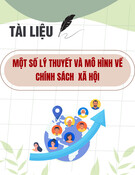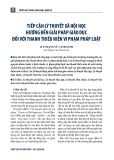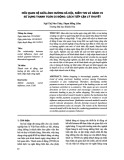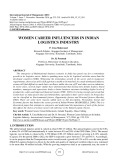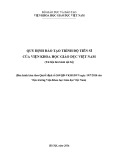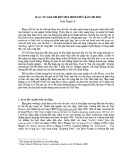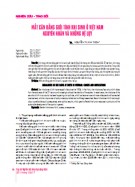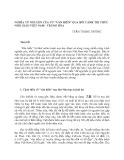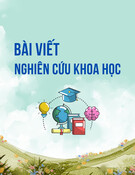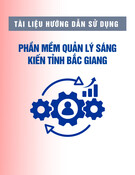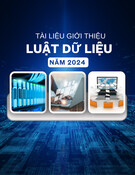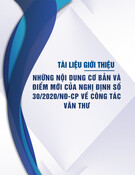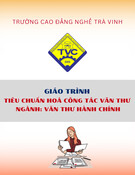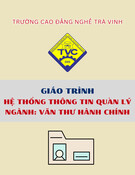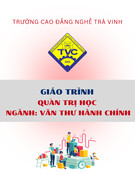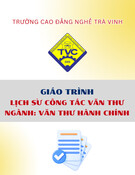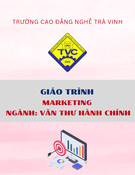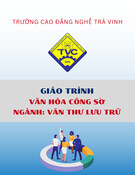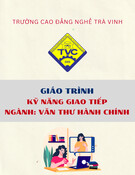
International Conference on Smart Schools 2022
56
PHÁT TRIỂN LÝ THUYẾT GIÁO DỤC TỐI ƯU VÀ VẬN DỤNG
CHUYỂN ĐỔI SỐ VÀO ĐẠI HỌC THÔNG MINH
DEVELOPMENT OF OPTIMAL EDUCATIONAL THEORY AND
USE DIGITAL TRANSFORMATION IN SMART UNIVERSITIES
TS. Phm Hữu Lộc
TS. Đinh Văn Đ
Cao đẳng Lý Tự Trọng thành phố Hồ Chí Minh
Email: phamhuuloc@lttc.edu.vn; dinhvande@lttc.edu.vn
Từ khóa:
TÓM TẮT:
Lý thuyết giáo dục, giáo
dục tối ưu, chuyển đổi số,
giáo dục đại hc, kinh tế tri
thức.
Keywords:
Educational theory,
optimal education, digital
transformation, higher
education, knowledge-based
economy.
Phát triển lý thuyết giáo dục tối ưu trên nền tảng chuyển đổi số ở giáo
dục đại học tại Việt Nam góp phần đắc lực trong việc tạo ra nguồn nhân lực
chất lượng cao, có khả năng hội nhập quốc tế và đáp ứng khả dĩ các yêu cầu
của giáo dục thời đại mới. Phát triển lý thuyết giáo dục tối ưu là phát triển
kinh tế tri thức vả tiếp theo phát triển các hình thái kinh tế - xã hội,…Lý
thuyết giáo dục tối ưu được đề xuất nhằm phát triển giáo dục đại học Việt
Nam tiệm cận với giáo dục hiện đại trên thế giới.
Vận dụng chuyển đổi số trong Giáo dục đại học là đường hướng khả dĩ
cho Giáo dục đại học thành công.
ABSTRACT:
Developing optimal educational theory on the basis of digital
transformation in higher education in Vietnam would effectively contribute
to the creation of high-quality human resources who are able to meet the
needs of international integration and the requirements of modern education.
Developing optimal educational theory is developing a knowledge-based
economy and then developing socio-economic forms. Optimal educational
theory is proposed to develop Vietnamese higher education asymptotically
with modern education in the world. Applying digital transformation in
university transactions is a possible path for successful higher education.
1. INTRODUCTION
Traditional education in Vietnamese universities, including its curricula, contents, methods, teaching aids, and
especially testing and assessing procedures, does not meet the expectations of learners, their families, schools, the
whole society, and the world of work. Therefore, it is always the guiding principle and the goal of the national
education to build an education system that is progressive, modern and rich in national identities. The optimal
educational theory proposes a possible direction for Vietnamese education to approach asymptotically with modern
education in the world [1] and [2].
Optimal Education Theory is a collection of the most advanced teaching methods, and assessment strategies,
approached with a view to bringing about the comprehensive development of learners. Over the centuries, the
world's education has made strong and positive changes in both form and content, from the organization and
management of educational institutions to the teaching methods, contents and each lecturer’s strategies. However,
the approach to optimal education for each country has different directions to suit the origin, audience, culture,
history of each locality and region. Vietnamese education inherits and promotes the quintessence of human
education and bases on the foundation of digital transformation applied in education and training to build the optimal
educational theory [2].
Optimal educational theory, built from ideas to designs and operating in a new modern educational
environment, always inherits from traditional education. In other words, traditional education is a lever for optimal
education to develop.
Digital transformation in education is the transfer of beneficial educational activities from the real world to the

International Conference on Smart Schools 2022
57
virtual world in the cyber environment. There, people access more information, shorten the distance, save time, and
narrow the spatial gap. Digital transformation is an inevitable, obvious and very fast trend, especially in the context
of the current Industrial Revolution 4.0 (Industry 4.0).
Digital transformation in education is a process in which we equip education with new technology
infrastructure as well as new equipment for learners (students), people who directly teach (Teachers), institutions
and government agencies. In parallel with hardware devices are software applications and platforms for all
educational activities and educational management of all levels to take place on that environment.
2. STUDY OVERVIEW
2.1. Status of higher education in Vietnam
In traditional education, the curriculum in the direction of academia, or commonly called "content-oriented"
education, has been widely applied. The basic feature of this educational method is that it is always interested in
imparting scientific knowledge to learners according to the prescribed curriculum. The knowledge content is
imparted based on the subjects of the respective specialized sciences. There, learners are equipped with different
systems of objective scientific knowledge in many fields. However, the academic curriculum has not explicitly
focused on learners as well as on the ability to apply learned scientific knowledge to real life situations.
The forms of testing and assessment of students' learning outcomes according to the content-oriented approach
are biased towards the assessment of knowledge value, mainly testing and evaluating the ability to memorize and
reproduce knowledge. This has been revealing many limitations in improving the activeness of learning and
students’ ability to flexibly and creatively apply knowledge, skills and techniques in various real-life situations [2]
& [4].
Content-oriented education has a one-way approach: Teachers give lectures, students listen and copy lessons.
There is little change in the construction of exercises, usually closed exercises, and hardly any applied reference to
transfer the learned knowledge to unknown or real life situations. The cumulative nature of learning is not
sufficiently taken into account. Hence, the learning results did not reflect the true capacity of the learners. There is
too much concentration on imparting knowledge, degrees and exam results, but no appropriate attention to the
capacity and quality of learners. The current way of organizing exams mostly just limits to assess students'
theoretical awareness.
Assessment is an important component of the training process, but now it is only at the level of categorizing
students’ learning. It focuses excessively on short-term memory and comprehension achievements while there is
too little regular review and connection between the known and the new. There is almost no identified competency
required in the test such as generic or distributed capabilities;
Education is limited in schools and is mainly based on interaction between teachers and students within the
scope of textbooks, lacking interaction with society. The role of families, mass organizations and the society is
increasingly blurred in the education of the young generation.
According to the knowledge assessment criteria, the final exam results do not define the level of knowledge
such as: knowing, understanding, applying, analyzing/synthesizing, evaluating and creating. According to skill
assessment criteria, final exam results do not distinguish abilities such as imitate, do (basic initial skills), do exactly
(skills for independent execution), transform (synthetic techniques) and mastering and automating (high-level
techniques). According to the attitude evaluation criteria, the final exam results do not show the students' learning
and examination attitudes such as acceptance, response, evaluation, sense of organization, personality expression.
The cause of all causes leading to limitation is the too slow development and little change of science and
technology, so the traditional society sets the mission of the school to be fully equipped with knowledge so that
people can be qualified to work for life.
Meanwhile, the Covid-19 pandemic has caused difficulties and damage to all aspects, strongly affecting the
field of Education and Training. According to the World Labor Organization (ILO), more than 70% of young people
studying or combining study with work have been negatively affected by the closure of schools, universities and
training centers since the outbreak of the pandemic.
Immediate damage: In the context of the complicated development of the Covid-19 pandemic, online learning
is a mandatory solution when learners cannot go to school. However, online learning has greatly increased the cost
of education. In Vietnam, the shift to online teaching causes the cost of education to increase exponentially. The
entire training program was disrupted, causing additional costs to build and redesign the program. That is not to
mention the expenses for the work of disinfection, sterilization, disease prevention and control over the past many

International Conference on Smart Schools 2022
58
months and other costs that have not been fully enumerated.
Long term impact: While the cost of education and training increased, educational services declined sharp.
According to the assessment of economic experts, the education services have the most dramatic economic decline
compared to that of other fields.
To solve the above problem, it is necessary to approach modern and advanced education and develop optimal
educational theory on the basis of digital transformation in higher education in Vietnam.
2.2. The inevitability of digital transformation
Over the past decades, our country's education has made remarkable achievements and development steps,
making an important contribution to the task of raising people's knowledge, training human resources, fostering
talents and achieving some important results in the construction, protection and development of the country.
However, that achievement is still low compared to the general development of the world education, especially
higher education. Optimal educational development is inevitable and digital transformation has contributed value
and topicality to education.
Social criticism has raised many questions for education; Transformation in education is a change and this
change must bring a new face for optimal education and approach the world education. So what element would be
changed in education? Where would this start? What are appropriate levels, fields and roadmaps? From a
comprehensive perspective, this is a nonlinear problem and the domain-dependent solution is different for each
educational institution in each country [3].
P.1: Applying IT to learning
The common point is that, unlike traditional education, digital transformation is a transformative method of
transmission. This change is to change the nature of the process with the ultimate goal of developing education
towards modernity. Digital transformation changes contents, methods and means, helping learners access modern
technology, and academic exchange.
Digital transformation in education is a change in which modern information technology is applied to meet the
increasing learning needs of students, lecturers and schools; create a learning environment where everything is
connected. It is an ecosystem that combines technology, services and security to bridge the digital gaps; create
collaborative, interactive, and personalized learning experiences.
In the school organizations, implementing digital transformation means the school renews the teaching and
management models, teachers innovate the contents and teaching methods based on e-lessons, students learn
actively and experience more through interaction in the digital environment, thereby capturing knowledge more
easily and improving the quality of education. Thanks to digital learning materials and that digital learning
environment, teaching models and methods are innovated in a more effective way [4].
To successfully carry out the task of digital transformation in education, identifying digital transformation as
the optimal goal is completely appropriate, grounded and feasible. The reason is that the 4.0 revolution is an

International Conference on Smart Schools 2022
59
opportunity for breakthroughs, Industry 4.0 is associated with the destruction of old models but this is creative
destruction. This revolution creates opportunities for latecomers, poor countries, and developing countries like
Vietnam.
Digital transformation in Education focuses on two main issues, which are digital transformations in teaching,
learning, testing and assessment, and digital transformations in management. Digital transformation in teaching,
learning and testing and assessment is the digitization of learning materials (electronic lectures, electronic textbooks,
e-learning lessons, multiple-choice question banks, ...), virtual laboratories, digital library, online training system…;
Digital transformation in teaching transforms all teaching methods, classroom management techniques, ways to
interact with learners in digital space,. Digital transformation in management is digitizing management information,
creating interconnected large database systems, deploying online public services, and applying 4.0 technologies
such as: AI, block chains, analytic data, ... for management, executive leadership, and administration [5].
Digital transformation in education does not just stop at teaching and learning, but the scope is extremely large.
Education management plays a very important role, where all activities, relationships, manipulations, interactions
in progress will be placed in the digital platform for operation and implementation. It is necessary to clearly see the
nature of digital transformation as follows: Digital transformation is not a substitute for real, direct and vivid
elements, but actual elements are put into digital transformation, thereby operating faster, more open and more
inclusive creating more learning opportunities and conditions, making the implementation and operation of
education in reality more effective and high-quality.
Improving the quality of education: Today, technological achievements such as the Internet of Things (IoT)
help enhance management and supervision in educational institutions, monitoring and observing learners' behavior.
Big data technology helps to analyze learners' learning behavior for appropriate support and advice. What is more,
Block chain helps to build and develop an information management system and student's education records,
supporting consolidation, management and data sharing, learning history recording, individual transcripts to ensure
consistency and transparency.
Building and developing a flexible learning space and time, promoting open - equal - personalized education:
Currently, open mass online courses appear with big names in the world such as: Udacity, Coursera, edX, Udemy,
FutureLearn, creating the most favorable conditions for learners to quickly acquire and master knowledge in a
flexible, efficient and convenient way anytime and anywhere. This base has opened up a new education - open
education, helping people to access multi-dimensional information, narrowing all gaps, optimally saving time,
thereby rapidly developing knowledge, and thinking on multimedia platforms.
Increase interactivity, practicality - application: Applying virtual reality, augmented reality in education to
build virtual laboratories, virtual reality models with user interaction, AR books, Blippar software for research on
space science, etc. helps learners have interesting, open, multi-sensory experiences in a virtual environment.
Therefore it is easy for them to understand, remember and explore while promoting interaction, practicing and
applying knowledge right in the lecture hall [6].
Reduced training costs: With the development of the Internet, online teaching models (e-learning) help reduce
training costs. Accordingly, the tuition fee will be significantly declined. The training institution saves the cost of
equipping facilities and the pay for lecturers and experts; learners save on tuition fees, living expenses, study
materials and other fees, etc.
Open education is an open learning resource that helps learners and teachers connect with knowledge
effectively wherever they are and during any time period; help managers be transparent about the teaching and
learning work of the educational institution that they lead. Open learning resources are an inevitable development
trend of modern education.
Optimal operation of training facility: The application of technology into operation helps to manage teachers
and students more thoroughly, reduce workload, decrease waste, and improve the efficiency and working quality of
departments and divisions.
Evaluating learners' learning outcomes is assessing learners' knowledge, skills and attitudes through
instructional materials and measuring progress: Using student assessments in combination with the analysis of data,
lecturers exercise their rights and obligations as teachers along with classroom management to adjust teaching plans
so that they are convenient and suitable for learners. The lecturer builds a suitable question bank for each subject;
students answer the lecturer's questions through the assessment software, from which the lecturer can accurately
assess the knowledge, skills, and attitudes of each student [7].
2.3. Optimal educational theory

International Conference on Smart Schools 2022
60
Teachers and students are constantly concerned about effective teaching and learning. Teachers can use learning
theories to determine a learner's capacity to orient and choose relevant instructional strategies. Learning theories
assist students in gaining a better understanding of their own talents so that they can select effective learning
techniques. The Theory of Optimal Education is a compilation of the most sophisticated methodologies and methods
of higher education, all aimed at providing learners with a holistic growth. However, depending on the origin,
audience, culture, and history of each area and region, each country's approach to optimal education takes different
ways [8].
In order to maintain the stability and development of multi-objective education, educators and education
managers must solve the problem of optimum education with a fast impact on time in the process of transitioning
the higher education model from the traditional to the optimal educational model.
Figure.2: Optimal educational model
The optimal teaching method will prepare students to be experts of critical thinking, creative thought, and
action. The teacher provides orientation, makes suggestions, guides document searches, organizes and coordinates
discussions, creates debate content, provides feedback to students, and appears when students are having difficulty.
Information technology advancements could lay the foundation for innovative management, teaching, learning,
and research approaches. The optimal educational method is the one based on the traditional educational method to
develop. Furthermore, there must be an organic dialectical connection between old and new educational techniques;
benefits and strengths must be retained and advanced, while restrictions that cannot be further developed must be
eradicated. It then provides learners with excellent efficiency and in-depth information. We always seek, inherit,
and promote our achievements in education; yet, we do not leave any ideas that would allow education to grow and
expand effectively.
Optimal educational theory is developed from concept to implementation in a new, modern educational setting,
and it always draws on conventional education. Traditional education is a lever for optimal education to develop.
The optimal educational challenge is solved by learners' real-world experiences. In fact, students come to higher
education institutions from all over the world, representing a variety of age groups, living situations, social settings,
and physical conditions. Ideologies differ as well. As a result, curriculum content must be built around this hands-
on experience. Because the pedagogical form, management method, learning conditions, experience environment,
and so on vary by location, the teacher cannot use a single pedagogical method for the entire class, but must rely on
the average number of people in the class and the personality of the learners to implement multi-intelligence teaching
theory in education and training [9].
According to optimum education theory, a national general training program should be produced, with the
detailed program determined by the educational institution in order to be consistent with the framework program. It
is not possible to impose a precise national program common to all learners from all localities, and it is not possible
to apply one kind of pedagogy to all learners. Specifying how the overall educational goals are presented concisely
and succinctly in the training framework program, while the educational institution and school are responsible for

